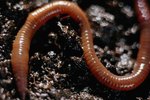
Kingdom Animalia, also known as Metazoa, comprises a broad range of animal species, from tiny parasitic nematodes and microscopic invertebrates to the largest of mammals -- the blue whale. According to the University of Michigan Museum of Zoology, the exact number of members of kingdom Animalia is unknown and difficult to guess; there are over one million estimated insects alone. Though the kingdom is diverse and large, all animals share a distinct set of characteristics.
Taxonomic Levels
Taxonomy is a method of classifying all living organisms based on their defining features and evolutionary relationships. All organisms belong to one of five or six kingdoms, which are broken down further into phylum, class, order, family (and occasionally subfamily), genus and finally species. Each of these levels increases in specificity from the one before it, before ultimately narrowing down to one particular species of organism. For example, humans belong to kingdom Animalia, phylum Chordata (vertebrates), class Mammalia (mammals), order Primate, family Hominidae (hominids), genus Homo, and ultimately species sapiens.
Kingdoms
Kingdoms are the broadest level of classification. When Linnaeus first developed his system of taxonomy, there were only two kingdoms: plants and animals. As scientific understanding has progressed, taxonomy has expanded to allow for more detailed classification. Now most scientists recognize five or six kingdoms into which every known organism falls, according to Rice University. These kingdoms are Animalia, Plantae, Monera (which can be subdivided into Eubacteria and Archeobacteria, expanding the number of kingdoms from five to six), Protista and Fungi.
Features
Members of the kingdom Animalia share a set of common, though broad, features. All animals are multicellular, and these cells lack the cell wall and chloroplasts that are typical of plants. Animals have mobility, at least at some point of their life cycle. This mobility may come in the form of complex muscle and bone tissues or simpler flagella and cilia. According to the State University of New York University at Buffalo, animals also reproduce sexually and are heterotrophic, that is they rely on other organisms for food rather than being capable of producing their own, as with plants. These traits all are required for an organism to be classified as an animal.
Types
Given the breadth of qualifications for kingdom Animalia, the incredible amount of diversity on display within the kingdom is not surprising. In addition to the organisms we traditionally think of as animals, that is mammals, reptiles, fish, birds and insects, there are numerous other creatures that may not immediately be recognized as such. Sponges, rotifers (small freshwater invertebrates), nematodes and flatworms all join elephants, tigers and eagles in the animal kingdom. There are a total of 35 currently recognized phyla in the kingdom Animalia, each with its own set of features that make it distinct from every other phyla, according to the State University of New York University at Buffalo. Vertebrates, for example, fall into just one of the 35 phyla of animals, Chordata.




